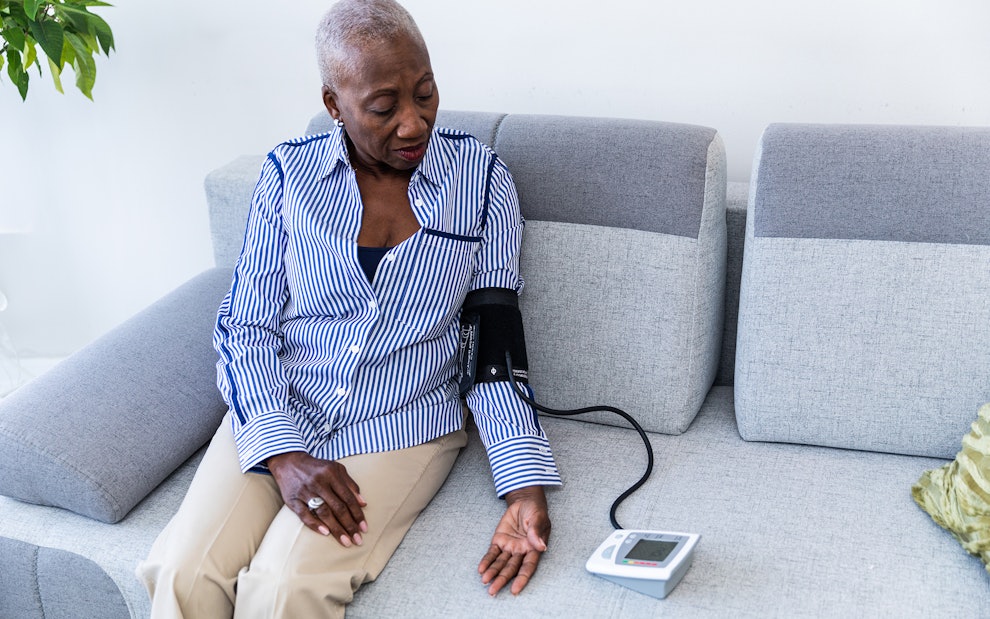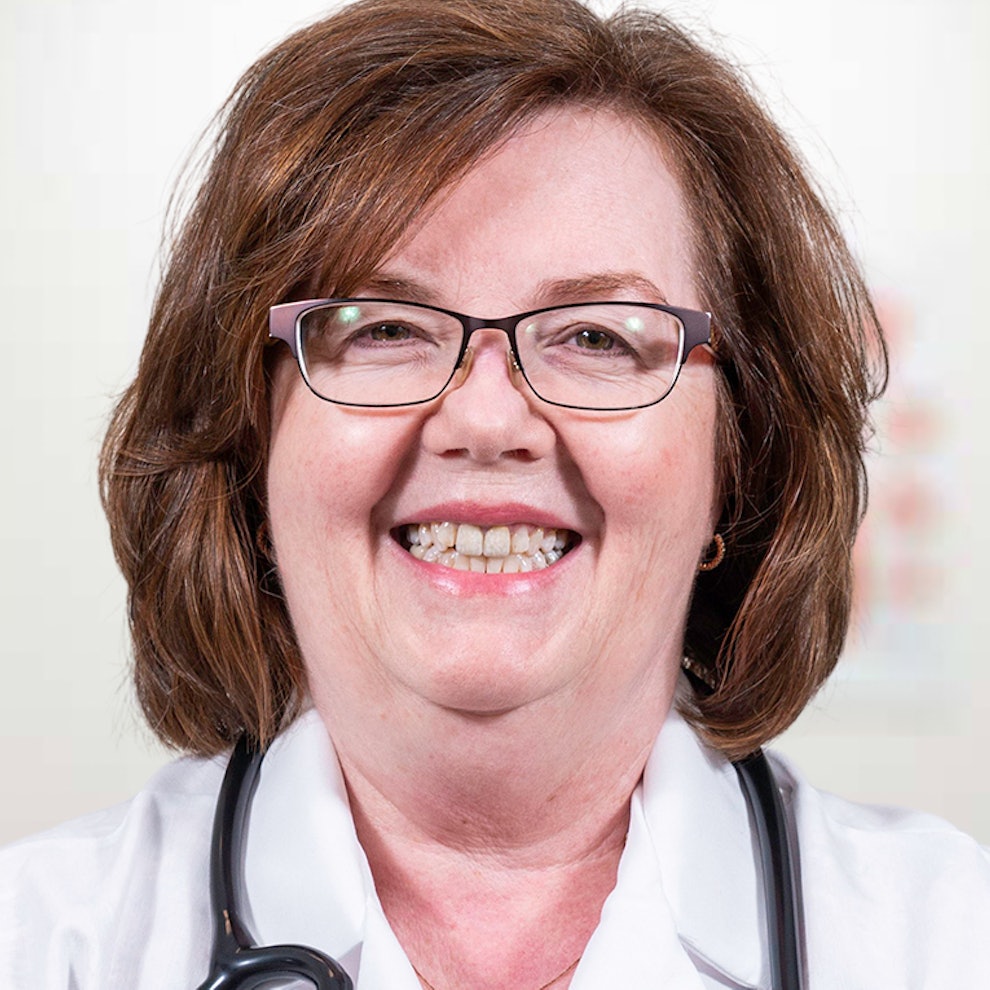Article at a glance
Hypertension is a problem with elevated high blood pressure levels. Many studies have found that it is a condition that has a higher prevalence in Black communities.
Many different factors have been connected as causes that induce hypertension, such as family history, weight, and race.
One of the main ways to avoid developing hypertension is through maintaining a healthy diet and exercise regimen. These methods also play a role in lowering blood pressure if someone is experiencing hypertension.

Hypertension, otherwise known as high blood pressure, is known to disproportionately affect the black communities. In 2018, The United States Department of Health and Human Services’ Office of Minority Health (OMH) reported that African Americans were 40% more likely to develop hypertension in comparison to non-Hispanic whites.
Since it’s less likely for African Americans to have their high blood pressure under control, black adults are 4 to 5 times more likely to die of hypertension complications (i.e. heart attack, kidney disease, heart disease, and stroke) in comparison to non-Hispanic white adults.
Due to these odds and the racial disparity within the issue of high blood pressure, understanding what hypertension is and how to prevent it is key for many Black Americans in order to live long, healthy lives.
Understanding Hypertension
In order to understand hypertension, it is imperative to know exactly what hypertension is as well as how it is measured.
What is blood pressure?
Blood pressure is how blood pushes against the artery walls when the heart pumps blood through the blood vessels. Throughout the day, blood pressure is known to fluctuate; rising and falling depending on various factors such as food intake, stress, exercise, and more.
What is considered a ‘normal’ blood pressure reading?
Blood pressure readings vary from patient to patient as health is measured on an individual basis. However, typically a normal, healthy blood pressure reading is considered to be 120/80 mmHg.
What do the numbers mean?
The first number (120), is known as the systolic blood pressure i.e. the pressure in your arteries when your heart beats. The second number (80), is known as the diastolic blood pressure i.e. the pressure in your arteries when the heart rests between beats.
What is considered ‘hypertension’ or ‘high blood pressure’?
Hypertension is assessed from patient to patient and can vary depending on each individual’s health. Traditionally, there are two set standards physicians can follow when evaluating high blood pressure: the 2014 guidelines released by The Eighth Report of the Joint National Committee on Prevention, Detection, Evaluation, and Treatment of High Blood Pressure and the 2017 guidelines released by The American College of Cardiology/American Heart Association Guideline for the Prevention, Detection, Evaluation, and Management of High Blood Pressure in Adults.
2003 Guidelines
Prehypertension (at risk of developing hypertension) is when a patient’s systolic number is above 120, up to 139 and their diastolic number is consistently above 80, up to 89.
Hypertension is when a patient’s systolic number is consistently 140 or higher and their diastolic number is 90 or above.
2017 Guidelines
Prehypertension is when a patient’s systolic number is above 120, up to 129.
Hypertension is when a patient’s systolic number is consistently 130 or higher and their diastolic number is above 80.
Note: High blood pressure is quantified on a patient-to-patient basis and may not always look like the standards shown above. It’s important to visit your provider at least annually to get your blood pressure taken and speak about any concerns you may have regarding hypertension.
Signs & Symptoms of Hypertension
It’s common for those with high blood pressure to show no symptoms at all, which is why it is often known as a “silent killer.” If a patient does have warning signs, these can include frequent headaches, blurred vision, chest discomfort, or erectile dysfunction.
Furthermore, it’s likely that these symptoms occur following an unhealthy or very salty meal. Since hypertension is likely to fly under the radar, it’s important to visit a provider at least annually to ensure one’s blood pressure is measured and evaluated. One of the key steps in avoiding major health issues is to regularly visit a medical professional so one can be fully aware of potential health risks or problems.
High Blood Pressure Causes
There is likely not one discernible cause that leads a patient to develop hypertension as it is normally the result of a variety of health or lifestyle decisions.
High blood pressure tends to gradually develop over a series of years so it’s important to attend one’s annual health check-up in order to be screened for symptoms. Receiving a screening and speaking with a doctor about the aspects of your life that could influence this health issue is perfect for kicking off awareness surrounding hypertension and thus, working on avoiding unhealthy habits that contribute to the problem.
High Blood Pressure Risk Factors
Overall, there are many risk factors that can increase a patient’s likelihood of developing the disease such as:
Age/Sex: High blood pressure is more common as people get older. Up to around 64, high blood pressure is more likely to develop in men. After age 65, women are at higher risk for developing high blood pressure.
Race: Hypertension disproportionately affects the African American and Black communities in the United States, making this a major risk factor. The OMH reports that African Americans are 40% more likely to develop hypertension in comparison to non-Hispanic whites.
Family History: If high blood pressure runs in your family then you’re more likely to develop it as well. This is why it’s important, if possible, to know your family’s health history as it can display what diseases or health issues you may be at risk of developing.
Being Overweight or Obese: More weight requires more blood to disperse and distribute nutrients and oxygen throughout the body. As blood capacity increases, so does the pressure on the artery walls, thus inducing hypertension over time along with weight gain. The OMH reported that, in 2018, 4 out of every 5 African American women were overweight or obese and that Black Americans were 1.3 times more likely to be overweight in comparison to non-Hispanic whites. Becoming aware of the issues affecting one’s community and lifestyle is pertinent to understanding the health issues one is at risk of developing.
Lack of Physical Activity: Not exercising increases the risk of becoming overweight or obese. Also, those who are inactive tend to have higher heart rates, meaning your heart is working harder to contract, thus putting more pressure on your arteries and raising your blood pressure.
Tobacco Use: Using tobacco in any capacity temporarily spikes your blood pressure. However, the chemicals in tobacco also damage the lining of your arteries, causing them to narrow, thus increasing the risk of developing high blood pressure.
Eating Excess Sodium: Eating too much sodium can cause your body to retain fluid, increasing blood pressure levels.
Diet Low in Potassium: Potassium balances the sodium in one’s cells, therefore, without it, sodium can build in the body and increase one’s risk of developing hypertension.
Drinking Excess Alcohol: Drinking in excess can damage your heart over time and affect one’s blood pressure levels. Consuming alcohol in excess amounts can be defined as more than 15 drinks a week for men and more than 8 drinks a week for women.
Stress: Living with chronic stress can increase your blood pressure. Furthermore, those living with chronic stress are more likely to participate in unhealthy habits induced such as excessive eating, smoking, or drinking which also greatly impact one’s blood pressure levels.
Note: It’s possible for hypertension to develop as a secondary issue due to other health crises such as kidney disease, thyroid problems, sleep apnea, and more. Be sure to speak with your doctor about your chronic conditions and mention any questions or concerns you may have about where these chronic conditions may lead.
Hypertension Complications
High blood pressure is known to induce other health issues or complications. Over time, especially if it’s not being controlled by blood pressure medication and lifestyle changes, hypertension is known to damage many vital organs such as the heart, kidneys, brain, and eyes. Some health complications prompted by high blood pressure include but are not limited to:
Cardiovascular disease
Stroke
Aneurysm
Metabolic syndrome
Blindness
Kidney disease
Dementia and memory loss
Erectile dysfunction
Ways to Prevent High Blood Pressure
One of the main ways to avoid developing high blood pressure is by maintaining a healthy lifestyle. However, it’s important to note that health looks different to each individual, and therefore, it’s important to speak with a provider about a healthcare plan that’s right for you.
A healthy lifestyle may vary from patient to patient, however, some baseline standards to include in one’s plan may include:
No smoking.
Drinking in moderation i.e. two or fewer drinks a day for a man and one drink or less a day for women.
Managing stress.
- Practicing a proper diet and exercise regiment.
It’s recommended to get at least 150 minutes of aerobic exercise per week or 75 minutes of vigorous exercise per week. Meanwhile, a general recommended diet should include a variety of fruits and vegetables, whole grains, fat-free dairy products, and lean proteins such as poultry, fish, beans, eggs, and nuts. When considering one’s diet, it’s also important to think about portion control and avoiding items that are high in saturated and trans fats, sodium, and added sugars. Many patients that are aiming to prevent high blood pressure, incorporate the DASH diet into their daily routine. DASH stands for “Dietary Approaches to Stop Hypertension” and it provides recommendations for how much sodium one should consume in a day along with food portions for each food group. To learn more about the DASH diet, visit this source. If confused about where to start with a diet and exercise plan, be sure to speak with your physician to determine what would work best for you. Before starting a new exercise program, you should talk to your doctor to make sure it is safe for you to do so.
Annual Visits to Doctor
The best way to catch rising blood pressure levels is by keeping up with annual health check-ups. Establishing a rapport with a physician and receiving recommended vaccinations and screenings boosts a patient’s awareness of the factors affecting their health and wellness. Not to mention, a patient’s blood pressure is measured each time they see a physician and therefore, any changes regarding prehypertension or hypertension will be noted.
Various Heart Diseases
Stroke
Aneurysm
Metabolic Syndrome
Blindness
Kidney Disease
Dementia and Memory Loss
Erectile Dysfunction
High Blood Pressure Control Tips
If you’re diagnosed with hypertension, it’s important to practice blood pressure management and keep levels in check since uncontrolled blood pressure is associated with many health complications and conditions.
Some ways to achieve blood pressure control include:
Take blood pressure medications such as calcium channel blockers
Monitor salt intake
Reduce alcohol consumption
Maintain a healthy body mass index (BMI)
Exercise regularly
Where and How to Measure Blood Pressure
Blood pressure can be measured in a variety of places and settings. However, blood pressure can be tricky to measure as it’s sensitive to daily functions such as eating, exercise, and emotions. Because of this, it’s important to understand where blood pressure can be taken and how to measure it properly.
Doctor’s Office
Each time a patient has a health check-up, their blood pressure is measured with a blood pressure cuff. However, it’s possible for numbers to be skewed slightly due to what is known as “white coat blood pressure”. Whitecoat blood pressure is when a patient’s heart rate is raised due to rushing to the office or stress. Therefore, it’s important to eat a healthy meal before going to your appointment and don’t smoke, stress, or drink caffeine, so your blood pressure numbers can be the most accurate.
Pharmacies
Another common place where patients can measure their blood pressure is at a machine in local pharmacies. The machines also use an automated cuff to measure blood pressure and provide prompts to guide the user throughout the process. Similar to going to the doctor’s office, it’s important to eat a healthy meal prior, don’t smoke, and calm one’s nerves before going in order to have the most accurate numbers.
Note: To find a pharmacy near you to get your blood pressure taken, visit this source.
At Home
It’s also possible for patients to measure their own blood pressure with a cuff or machine in their own homes. For most patients, having a machine or cuff at home is not necessary unless they have blood pressure issues. Be sure to speak to a doctor about whether or not this would be a beneficial step for you to take and to learn more tips about taking your own blood pressure, visit this source.
Note: To learn more about measuring blood pressure at home, visit this resource.
Sources
https://minorityhealth.hhs.gov/omh/browse.aspx?lvl=4&lvlid=19
https://www.minorityhealth.hhs.gov/omh/browse.aspx?lvl=4&lvlid=25
https://www.mayoclinic.org/diseases-conditions/high-blood-pressure/symptoms-causes/syc-20373410
https://www.heart.org/en/news/2020/05/22/how-to-accurately-measure-blood-pressure-at-home
https://www.helpguide.org/harvard/whats-the-best-exercise-plan-for-me.htm
https://www.nhlbi.nih.gov/health/educational/lose_wt/eat/calories.htm
Breakdown of Hypertension
This infographic explains what hypertension is and how to prevent it.



